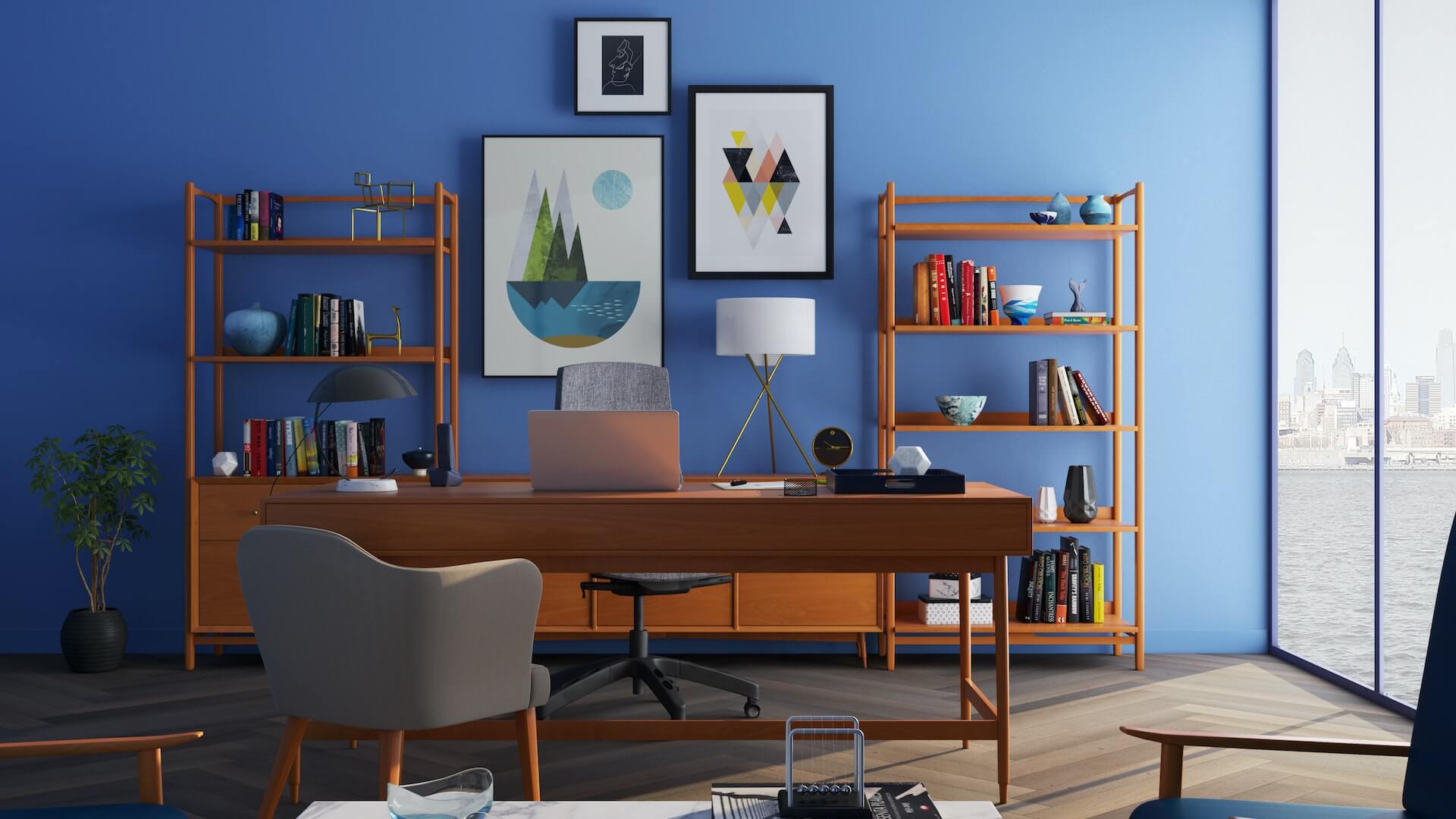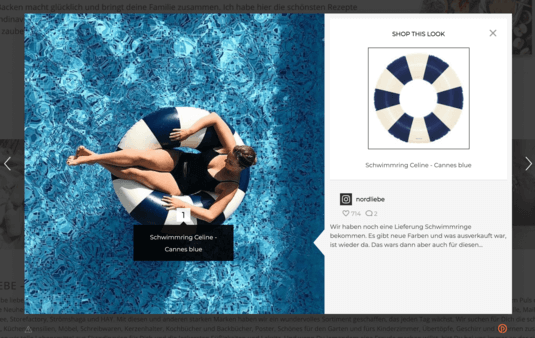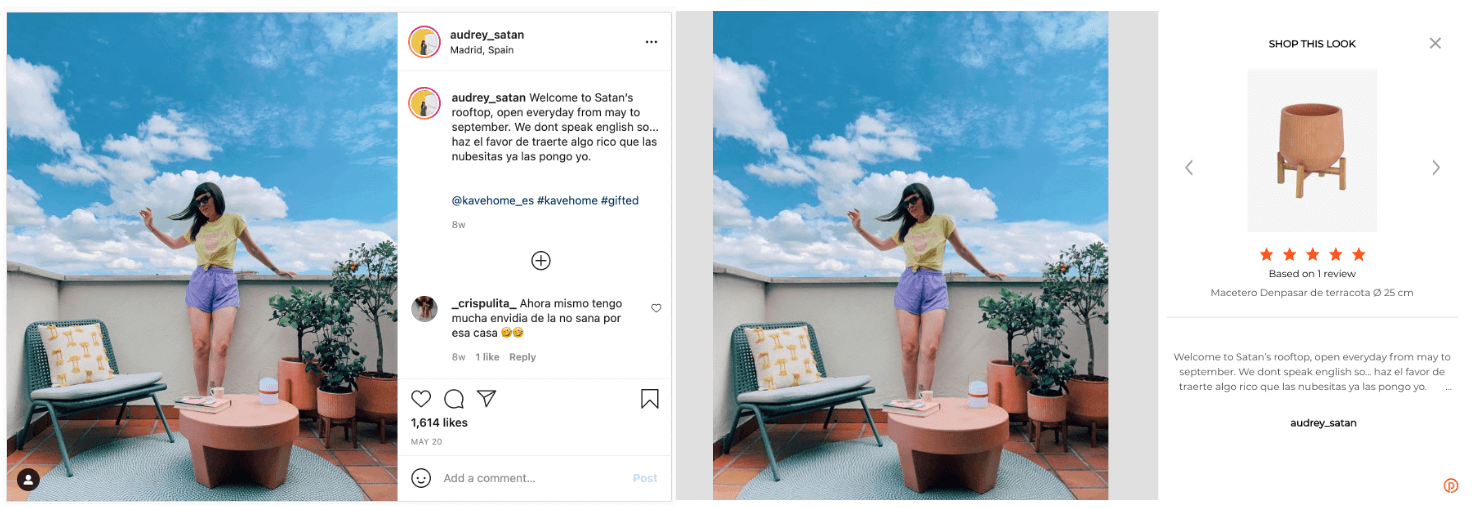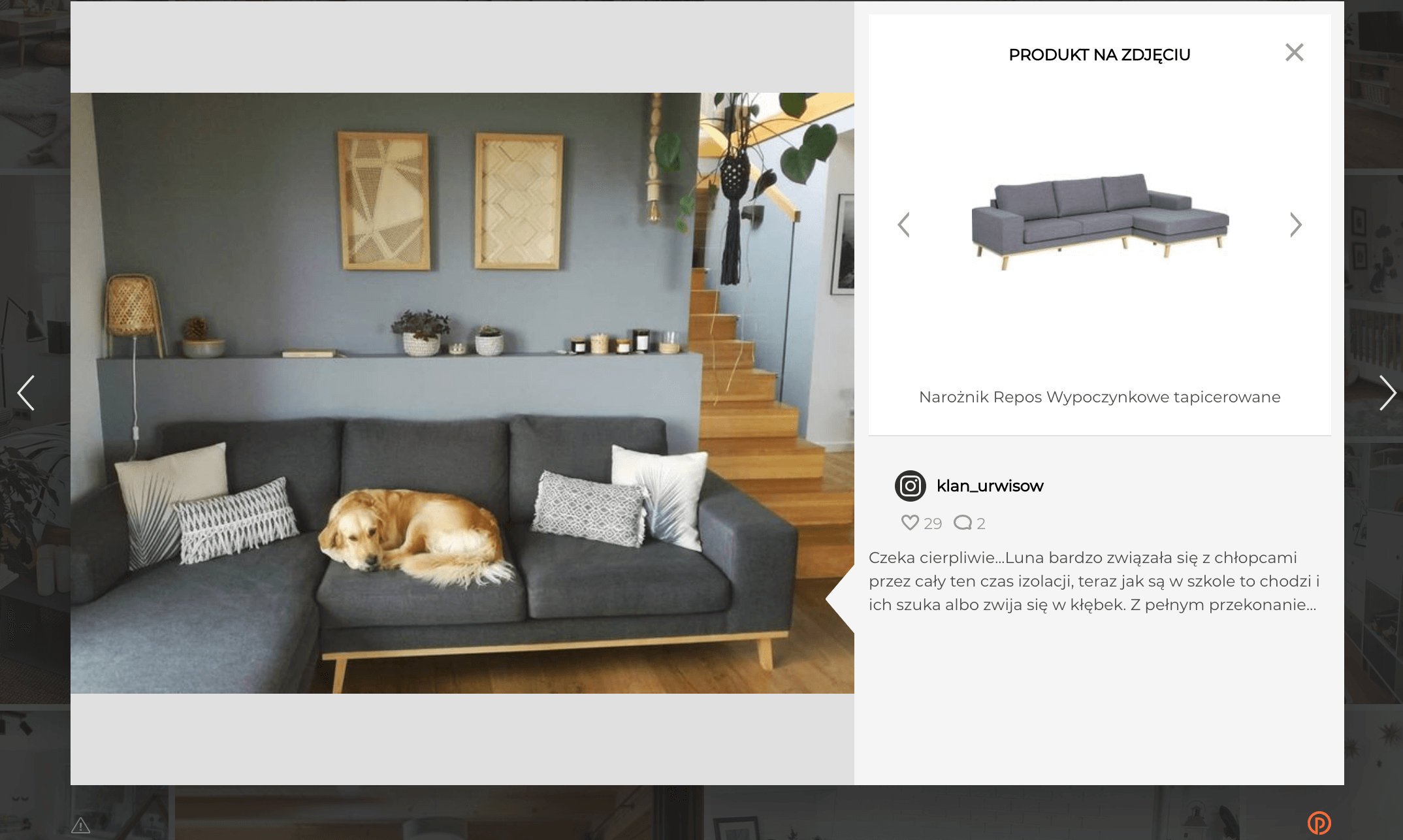Case Studies
Industries
Resources
Ratings & Reviews
NEW

After home and garden spending saw online sales increase by 71% in 2020 and 120% in Q1 of 2021, it is becoming increasingly more important for brands to latch on to the latest trends in online social selling, namely: User Generated Content strategies.
eCommerce brands across the globe are beginning to understand the power of stretching their social media engagement further by integrating customer content into their marketing efforts. While many industries benefit from this strategy, online furniture brands have a lot to gain.
Here are 4 concrete reasons why customer content is a must-have in any furniture brand’s eCommerce. Alongside this we have paired each reason with examples from leading homeware brands.
While your brand’s personal styling ideas are useful, it can’t beat the enthusiasm that comes with a happy customer styling their own home with your products. The styling choices don’t appear in a showroom or a product display; it’s real people who face real styling challenges and have found solace in your online furniture brand. Nothing is more inspiring for your future customers!
With UGC, you let your customers inspire future shoppers by including their images and videos in your online buying process. Through using your customers’ styling ideas, your brand have a key glimpse into your customer’s minds. This can inspire future design decisions or even how you display them in your store.
Home furnishings brand, Nordliebe, takes their UGC gallery one step further by including HotSpots or numbered tags in their customer content that show shoppers where each product appears in the photo.

This feature is really useful for online furniture brands, as home products are fully integrated into the daily lives of their users. Maybe they even have 2 or 3 pieces to show-off in one picture! HotSpots help make the shopping journey more compelling and can add a more interactive touch to your inspiring UGC integration.
While you inspire customers with your UGC, you’ll also notice the difference in sales. Let’s move on to how customer content can help you convert.
We can’t forget the selling power that comes with User Generated Content, especially when it’s directly connected to your products in your eCommerce store. We see an average 15% increase of conversion rates with authentic UGC, but online furniture brands have the potential for much more.
Jennifer Taylor Home has seen a conversion rate increase of 49.7% with their customer content integration, including a 22.06% interaction rate. Numbers like these make UGC a no-brainer.

Not only will you see an increase in sales with UGC, but also it will help your brand save money, time and resources on creating content by leveraging the content that’s being produced for you. It’s a more sustainable content strategy with the added bonus of a devoted brand community!
Jennifer Taylor Home also agrees with Riviera Maison on the importance of giving your customers the best chance to understand how your home decor products will fit into their home.
“I think UGC is very important especially for a product category such as furniture. Even though we list our products with the dimensions, some people can’t actually picture in their mind how big or small the item actually is. To see it in a real life setting, they actually get a better idea of what the product will look like in terms of size and everything else.”
Vu Tong, eCommerce Account Manager with JTH
Read more about JTH in their case study here. For now, let’s move on to customer engagement.
I’m sure I don’t need to sell you on the benefits of social selling, the potential for eCommerce brands is huge. If you’re looking for some tips on how to meet customers where they spend their time (namely Instagram), then you can catch up on our Instagram Marketing strategies here. Otherwise, it’s time to extend that engagement past the confines of social media.
If you have customers posting on your hashtag, tagging, or mentioning your brand, this is amazing for your social media engagement. And guess what? It can also mean the same for your eCommerce engagement.
It’s one thing to include images from social media in your eCommerce store, but it’s a whole different story when you can make that content shoppable and attribute conversions to specific pieces of content or users.
We’ve all seen brands repost customer images on social media with major success, but now leading brands are doing more with that content. For example, Kavehome.

Users love engaging with social content while it’s on social media, and this remains true when it’s brought into your online store. UGC is 5X more likely to convert than professional content because it’s more authentic and engaging. Use that to your advantage!
“We always recognized the power of content generated by our clients, and as a way to be much more creative than our creatives can be.”
Victor Font – Managing Director at Kave Home
It also makes a much more cohesive brand image and customer journey. You can even use UGC insights to see which users post for you the most and which content is the most successful. Then, utilize this intel to feature other content that will convert or foster better relationships with influencers and users.
Find out how Kavehome use Flowbox’s technology to enhance their UGC strategy in this case study.
Let’s move on to our last reason why furniture brands should leverage UGC. Two words: social proof!
We’ve talked about conversions, engagement and style inspiration. But there is one huge UGC benefit that we still haven’t covered: gaining trust through visual reviews.
You may already use a reviews service to gain your customers’ trust, which is a reliable way to show the value of your products. But you should be hitting users from all sides with your reviews, and that includes visual examples of how your customers feel about your products.
Pairing visual reviews with written reviews is a great way to ensure that your customers find your products reliable and desirable with the help of social proof.
Give your customers more reason to trust your brand by letting other people tell them they should – just like online furniture brand VOX.

Visual content is useful because shoppers not only read the captions from social media, but they also see exactly how well your products work in another customer’s homes. Also they know it’s coming from a real person and has not been generated by the brand. It’s a win-win with UGC reviews!